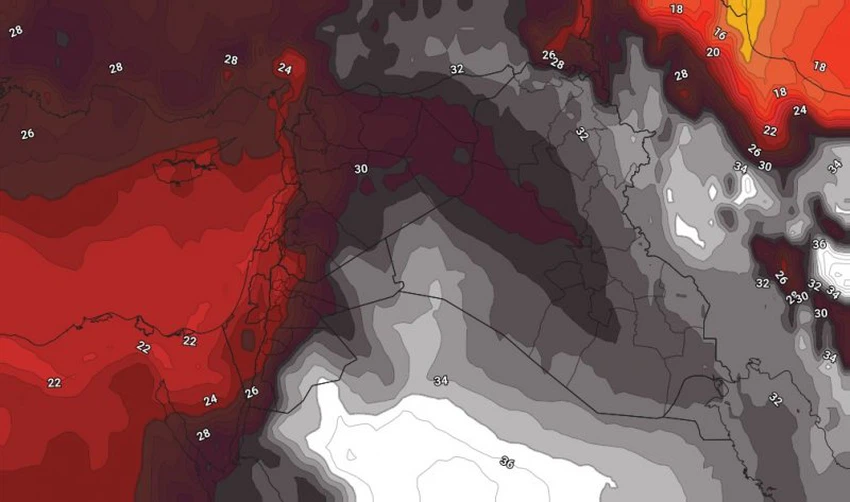Jordan: Huge temperature differences between the east and west of the Kingdom, exceeding 12 degrees Celsius, details
Arab Weather - Meteorologists at the Arab Weather Center said that the Kingdom will be affected by a hot air mass during the second half of the current week, as its direct effects are expected to be concentrated on the eastern regions, which will lead to a noticeable rise in temperatures in those regions. In contrast, the western regions of the Kingdom will remain under the influence of sea currents, which contributes to reducing the direct impact of the hot air mass, which creates a clear temperature difference of more than 10 degrees Celsius between eastern and western Jordan.
A significant rise in temperatures in eastern Jordan
The eastern regions of Jordan are expected to witness a significant rise in temperatures due to the influence of the hot air mass, especially on Wednesday. The maximum temperature in these areas may reach more than 43 degrees Celsius, making the atmosphere extremely hot, especially during the daytime hours.
Sea currents break the heat in the atmosphere west of Jordan
In contrast, the western regions of the Kingdom, including the capital Amman, will remain under the influence of sea currents. These currents will contribute to a significant drop in temperatures compared to the east of the Kingdom, where the maximum is expected to reach about 33 degrees Celsius in the west of the capital Amman with the peak of the hot air mass, making the weather more moderate compared to the eastern regions, with expected temperature differences between the east and west of the capital Amman.
Temperature difference of up to 12 degrees Celsius between the east and west of the country
This noticeable temperature contrast between eastern and western Jordan reflects the different effects of the hot air mass and ocean currents. As these weather conditions persist, the temperature difference between the two regions is expected to remain clear, which requires attention, especially in the eastern regions, which will witness a significant rise in temperatures. For example, the maximum temperature on Wednesday and Thursday in the Tlaa Al Ali area west of the capital will be 32-33 degrees Celsius, while in the Ruwaished area in the east of the Kingdom it will reach 44-45 degrees Celsius.
This sharp temperature difference between the east and west of Jordan is attributed to the concentration of a hot air mass coming from the Arabian Peninsula over the eastern regions, while the colors on the map differ in the west of the Kingdom, where it represents a less hot air mass accompanied by sea currents that break the intensity of the heat. It is also worth noting that the weather at night in the west of the Kingdom will be moderate and suitable for outdoor sessions.

(The map is a product of advanced computer simulations at the Arab Weather Center, which shows the movement of air masses in the lower layers of the atmosphere.)
God knows best.
Read also:
Jordan | Find out the highest expected temperature in the capital Amman for the rest of the week
Jordan in Summer 2024: Weather factors keep away severe heat waves
Arabia Weather App
Download the app to receive weather notifications and more..



